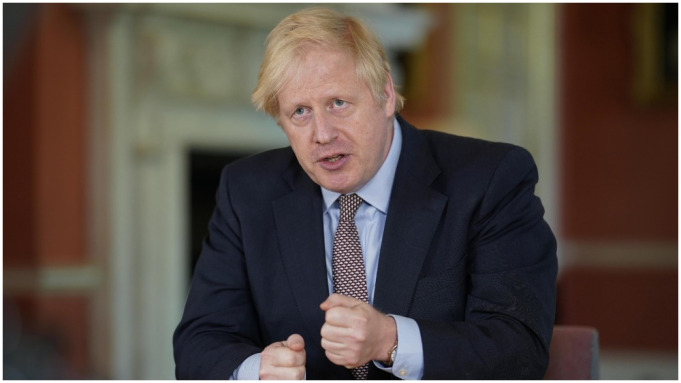LONDON: British government borrowing is soaring to levels not seen since World War Two, something Prime Minister Boris Johnson and his finance minister Rishi Sunak will try to fix once the worst of the coronavirus crisis has passed.
Government forecasters think the budget deficit could jump five-fold to 300 billion pounds ($380 billion) this year or around 15% of annual economic output.
By comparison, after the global financial crisis the deficit peaked at 10% and it took almost a decade of spending cuts to bring it down to around 2% last year.
Johnson has suggested that more spending is on the way by promising to “double down” on his plans for more public infrastructure investment.
Sunak has said little about how he might tackle the surge in public debt estimated to hit 2.2 trillion pounds this year, beyond hinting that self-employed workers might see their tax bills rise.
How is Britain funding its borrowings?
Helped by the Bank of England’s huge bond-buying programme and its record low interest rates, Britain is selling bonds to investors at an unprecedented pace, with 225 billion pounds of issuance planned between April and July.
The government feels under less pressure than in 2010, when it feared a Greece-style loss of confidence among investors.
Last month it sold a three-year bond with a negative yield.
In the short run, the OBR expects debt servicing costs to fall as lower interest rates outweigh the burden of the extra borrowing.
How will Britain cut the deficit after the crisis?
Much of the borrowing surge is caused by programmes that the government hopes will be temporary. Its income support programmes for workers are likely to cost more than 100 billion pounds but they are due to end by October.
The government hopes its unprecedented support will allow the economy to revive after coronavirus restrictions are lifted.
Initial forecasts from Britain’s budget forecasters and the BoE assumed little long-term economic damage.
But policymakers now see a risk of so-called scarring to hotels, airlines, bars and restaurants due to changed customer behavior and reduced demand for city-centre office space.
Almost all recessions have caused some scarring, and Britain – like other countries – is likely to face a persistent budget hole after the crisis, HSBC economist Stephen King said.
But significant spending cuts are unlikely with voters tired of austerity and Johnson committing to invest more, leaving tax rises as the most obvious option.
However, Johnson promised before 2019’s election not to raise the rates of income tax, value-added tax or national insurance, the three biggest sources of revenue.
How has Britain reduced debt levels before?
In the past, British debt-to-GDP levels have risen far higher than now, peaking at 259% of GDP in 1946.
Strong economic growth, and low interest rates relative to inflation, played a much bigger role in reducing debt over the following 20 years than tax rises or spending cuts, according to economic historian Nicholas Crafts.
By contrast, between World War One and World War Two, high interest rates, slow growth and the Great Depression negated the impact of the government’s sizeable budget surpluses.
This time, the picture is mixed with interest rates and inflation both low and a growth outlook that has been weak for more than a decade.
Britain’s large stock of inflation-linked bonds makes it harder to inflate away debt as happened in the past, even if the government raised the BoE’s inflation target.
For HSBC’s King, the closest historic parallel to today is the Napoleonic Wars at the start of the 19th century – when Britain introduced income tax.
“It is difficult to avoid the conclusion that, once again, the taxman cometh,” he said.




